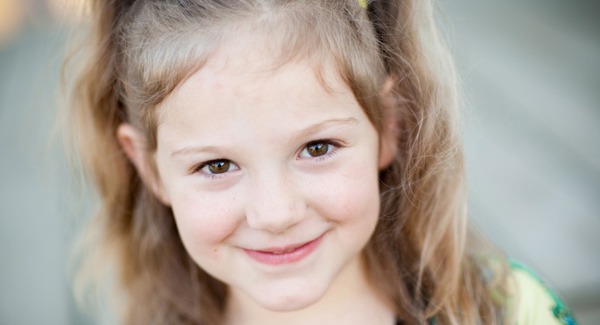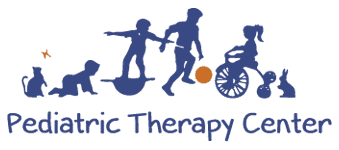Milestones
What's wrong with my child?
To accomplish each developmental milestone, whether gross and fine motor, speech or oral motor and feeding, a child needs the right combination of muscular strength, coordination, sound development and especially determination. While every child is unique, if your child is not reaching some of the below milestones, early intervention is encouraged. Early intervention into your child’s developmental delay is critical. If you recognize that your child is not reaching the below milestones, contact PTC.
Speech, Language, Oral Motor and Feeding Milestones
Motor Skills Milestones
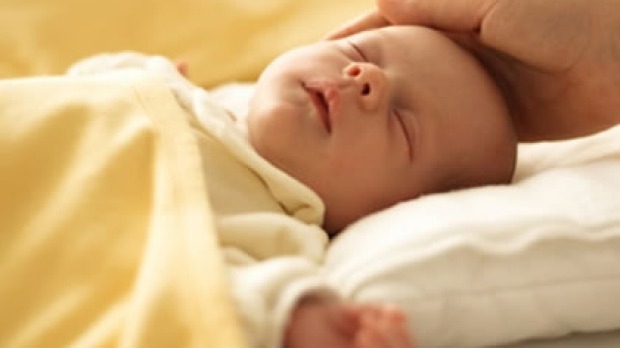
Neonate and First Month
- Baby orients visually when head is supported.
- Baby moves both arms in wide, shoulder originating movements.
- Elbows are flexed and recoil into flexion when passively extended.
- During active periods, baby kicks with rhythmical and reciprocal patterns.
- Baby’s hips, knees and ankles recoil into flexion when passively extended When pulled to sit, baby changes facial expression to indicate awareness that something is wrong with head position.
- Baby takes weight and extends the legs When leaned forward while standing, baby responds with well-organized reciprocal walking movements.
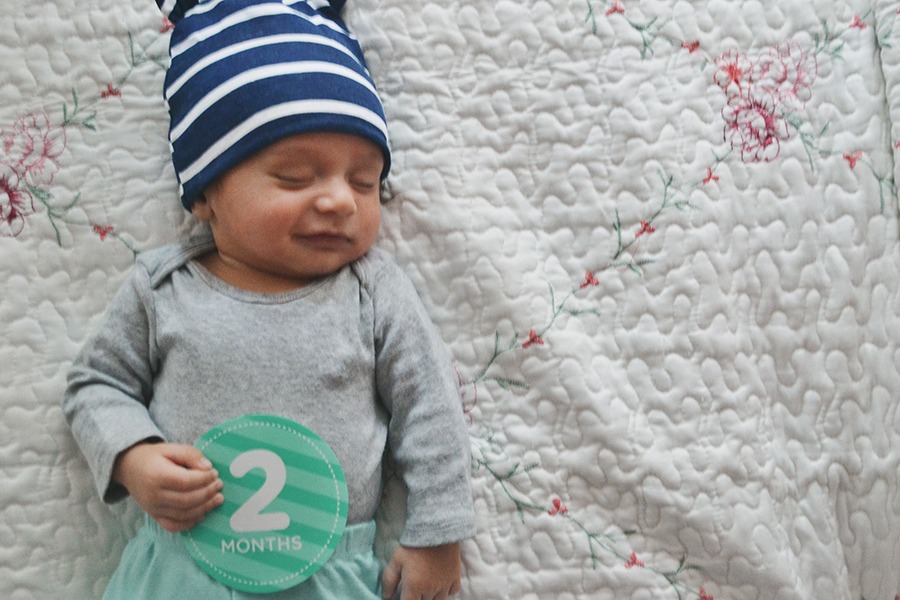
Second Month
- Baby can track from side to midline to side.
- Baby moves shoulders into abduction and external rotation.
- Baby brings head and mouth to hand for self-calming.
- Baby kicks with a variety of lower extremity movements.
- Baby attempts to lift head when pulled to sit, but does not have sufficient neck muscle control.
- Baby may try to visually fixate on examiner for stability.
- Baby lifts head and briefly sustains it.
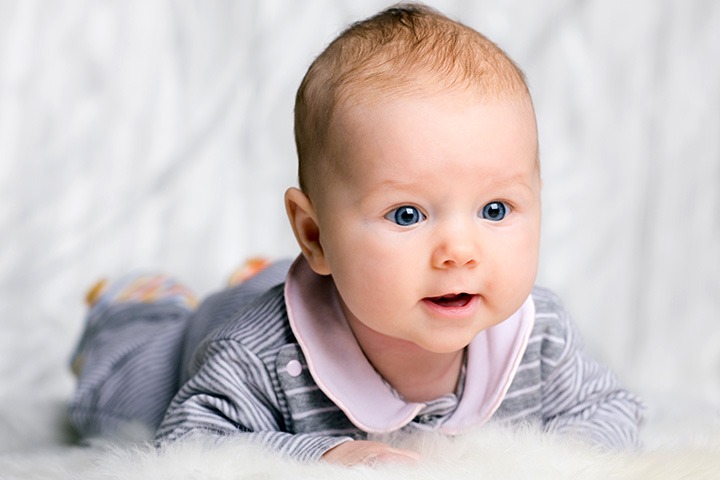
Third Month
- Baby uses symmetrical and asymmetrical head movements.
- Baby is alert and aware of the environment.
- Baby consistently follows an object or face horizontally from side to side and vertically When head is actively stabilized at midline, visual convergence begins and baby can regard a toy in midline.
- Baby uses symmetrical and asymmetrical upper extremity movements and postures Baby actively moves arms:arms:
- Shoulder external rotation 90 degrees and internal rotation onto body.
- Shoulder abduction to 90 degrees, adduction to sides.
- Elbow extension and flexion.
- Baby brings hands to the body and explores mouth, body or clothing.
- Baby kicks with symmetrical and reciprocal patterns.
- Baby lifts head up 45 degrees to 90 degrees midline and maintains it without bobbing.
- Baby moves elbows in line with or in front of the shoulders.
- Baby usually assumes frog-legged position (Symmetrical hip flexion, abduction, external rotation, knee flexion, and ankle dorsiflexion and eversion).
- Baby initially has a head lag, but as the baby comes closer to upright position, baby lifts head without chin tucking.
- In sitting, baby extends back and maintains weight on the ischial turberosities.
- Baby rights head with hyperextension and scapular adduction when the shoulders are in front of the hips.
- Baby accepts weight on both feet.
- Shoulder external rotation 90 degrees and internal rotation onto body.
- Shoulder abduction to 90 degrees, adduction to sides.
- Elbow extension and flexion.
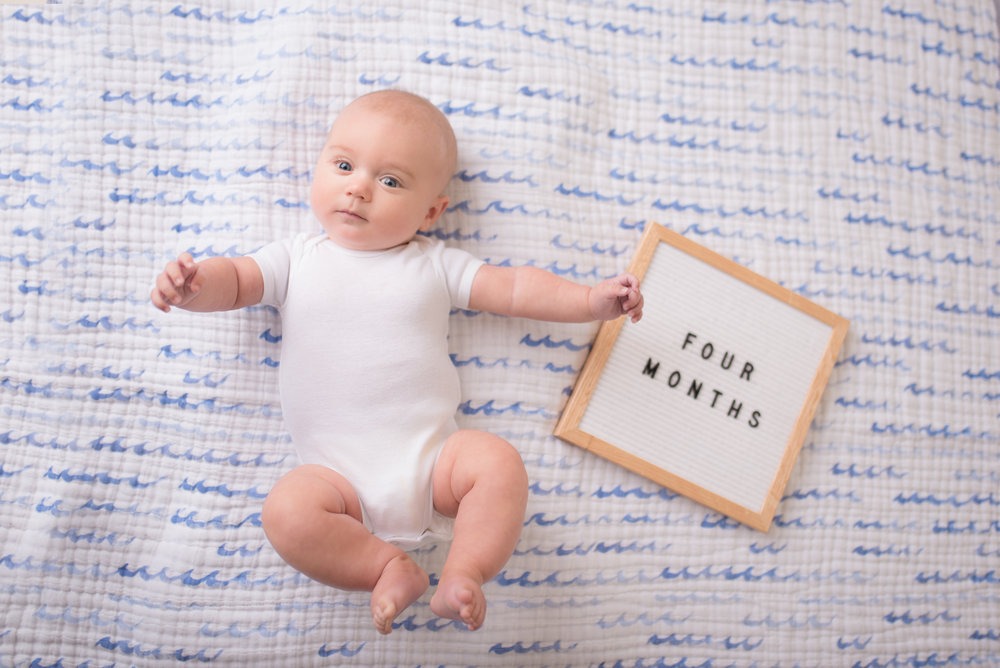
Fourth Month
- Baby rolls from supine to sidelying.
- Baby can actively flex head, tuck chin, and maintain the head in midline.
- Baby briefly sustains midline visual convergence.
- Baby uses abdominals and hip flexors to flex the hips to 90 degrees and slightly lift buttocks during hands-to-knees play.
- Baby experiments with anterior and posterior pelvic tilts.
- Baby brings hands to face Baby brings hands together above chest.
- Baby reaches hands to hips.
- Baby reaches hands to flexed knees Baby uses bilateral reaching patterns.
- Baby moves legs from frog-legged position to hip flexion with abduction.
- Baby moves legs symmetrically, alternating between total flexion and total extension.
- Baby occasionally uses dissociated lower extremity movements.
- The lower extremities mirror the upper extremities during reaching: arms flex/legs flex; arms extend/legs extend.
- Baby exhibits symmetrical flexion as the dominant component of rolling. Both hips and knees are flexed and the hands are together or on the knees.lexed and the hands are together or on the knees.
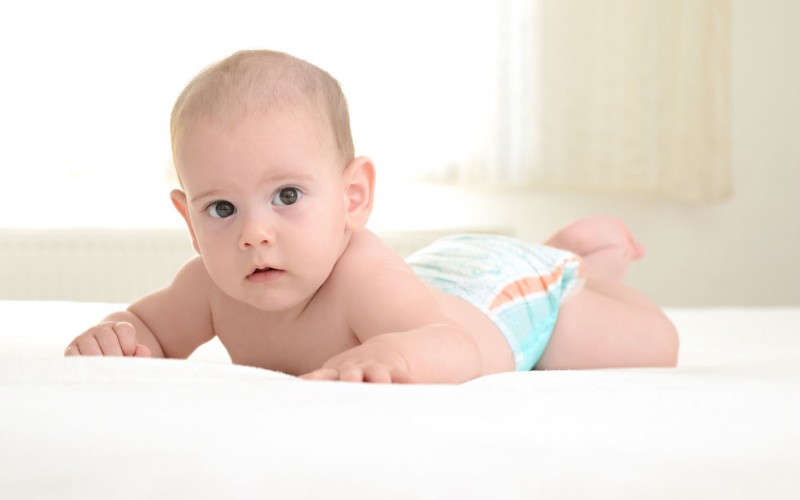
Fifth Month
- Baby actively flexes and reaches hands to feet.
- Baby brings feet to mouth.
- Baby rolls from supine to sidelying.
- Baby tucks the chin when engaged in supine flexion activities.
- Baby dissociates eye movements from head movements. Baby can use eyes to track an object without moving the head.
- Baby uses vision to guide reaching and grasping Baby flexes against gravity, lifting buttocks without flexing spine while reaching hands-to-feet Baby reaches with bilateral symmetrical arm movements.
- Baby reaches for and tactually explores the knees, legs and feet of lifted legs.
- Baby uses vision to orient hands before grasping an object.
- Baby uses fingers to hold objects firmly in the center of the palm.
- Baby can bring a toy into the visual field and visually inspect it.
- Baby moves lower extremities with symmetrical and asymmetrical movements.
- Baby kicks with dissociated lower extremity movements.
- Baby can flex hips to nearly 180 degrees and bring feet to mouth.
- Baby’s lower extremities no longer mirror upper extremities during reaching.
- Baby rolls to sidelying from a symmetrically flexed position.
- Baby lifts head and laterally flexes neck when in sidelying In sidelying, baby exhibits brief lateral flexion of the trunk during lateral flexion of the head.
- In sidelying, baby bears weight on one arm and reaches with the other arm.
- In sidelying, baby dissociates legs; top leg remains flexed and abducted, bottom leg extends.
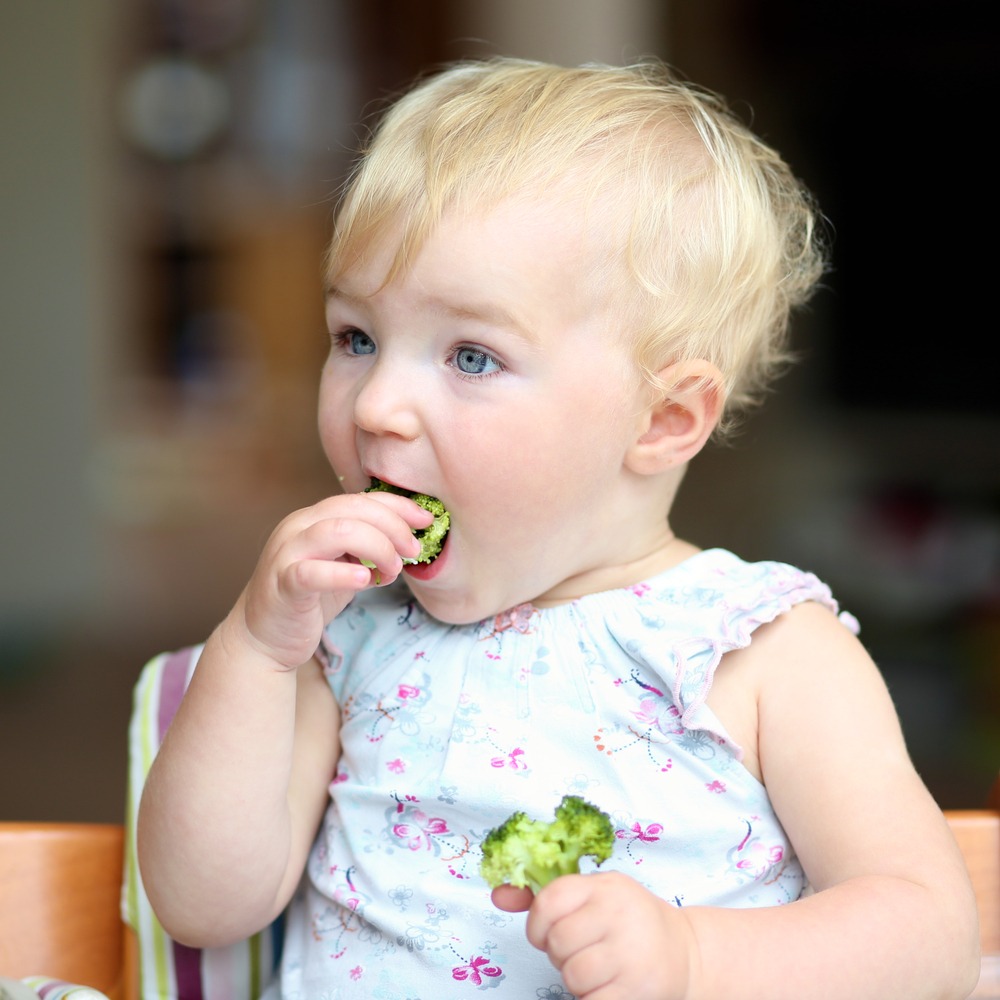
Sixth Month
- Baby actively flexes, reaches hands to feet, and plays in mid-positions.
- Baby dissociates eye movements from head movements.
- Baby can track an object with the eyes, without the head moving.
- Baby flexes against gravity, lifting buttocks without flexing spine.
- Baby reaches with one or both hands.
- Baby reaches hands to lifted feet.
- Baby grasps an object with one hand and explores it with the other hand.
- Baby experiments in the hands-to-feet position.
- Baby brings and holds hips close to 90 degrees of flexion.
- Baby dissociates the lower extremities in supine, placing one foot on the opposite knee.
- Baby maintains and recovers disturbed balance while legs are lifted in supine.
- Baby actively rolls from supine to prone Baby pushes up onto extended arms.
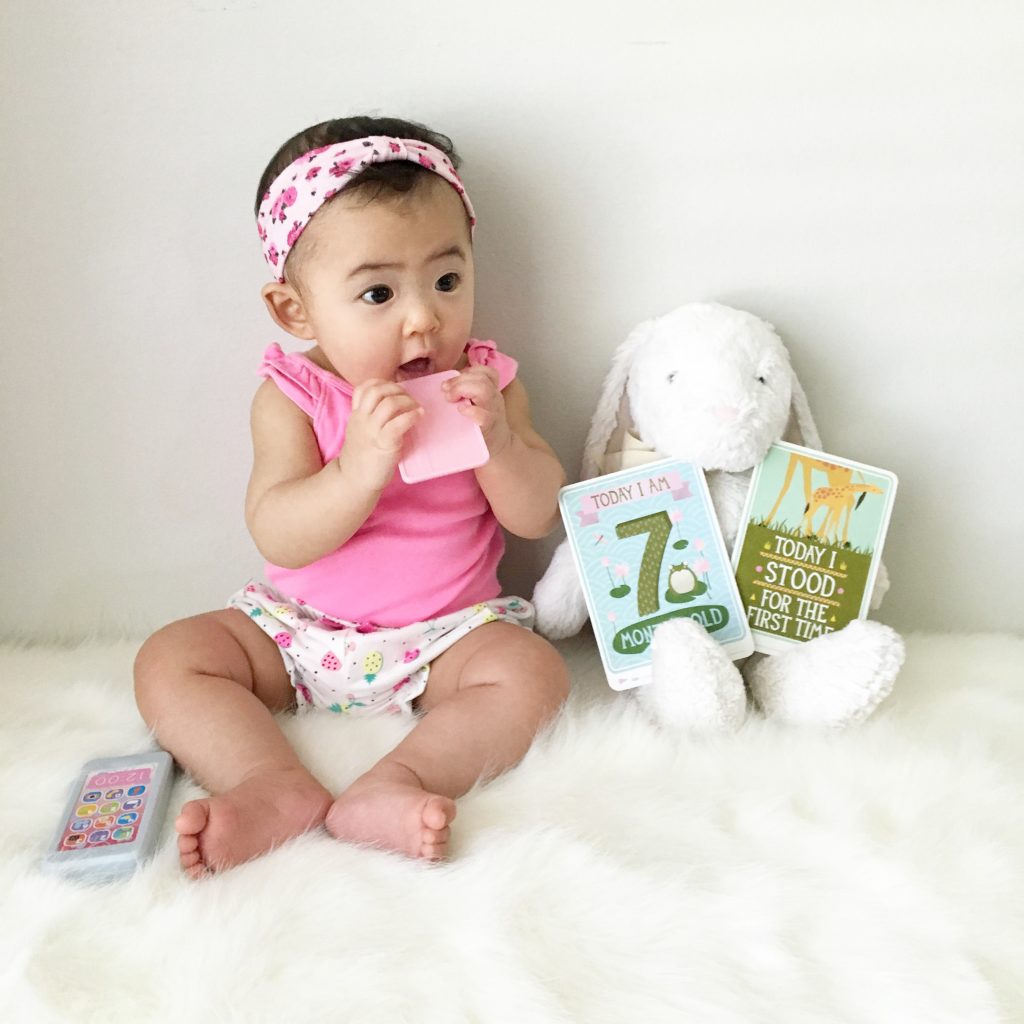
Seventh Month
- Baby rarely stays on back for a very long time.
- Baby is independent and functional in prone.
- Baby bears weight on the forearms and extended arms.
- Baby shifts weight in the shoulder girdle and pelvic girdle and reaches while in forearm and extended arm weight bearing.
- Baby shifts weight in the lower trunk and pelvis and assumes a position of lower extremity dissociation.
Baby reaches in all directions for toys.
- Baby uses radial-palmar grasp and inferior scissor grasp with adducted thumbs and flexed fingers.
- Baby spends much of the time in prone in a laterally shifted, asymmetrical posture.
- In sidelying, baby dissociates the lower extremities:
- Baby extends weight-bearing leg at hip and knee.
- Baby flexes and abducts unweighted leg at hop and flexes at knee.
- Baby transitions from back to all fours.
- Baby initiates transitions from prone to quadruped with dissociation of the lower extremities.
- Baby maintains upper extremity extension and lifts pelvis laterally over flexed leg.
- Baby rocks in on all fours:
- Baby rocks forward and backward, fixing with hip flexors.
- Baby initially rocks with large movements and falling.
- Baby shifts weight over the wrists and hands during rocking:
- Baby shifts weight forward over hands.
- Baby shifts weight laterally over hands.
- Baby transitions from quadruped to prone.
- Baby initiates pull to sit, by independently flexing the head and actively pulling with the arms.
- Baby sits independently with straight back Baby demonstrates head rotation leading to trunk rotation, which causes subtle weight shifting to the face-side.
- Baby bangs and shakes a toy.
- Baby transfers toy from hand to hand.
- Baby rises to stand independently by using upper extremities to pull up on furniture or people.
- Baby uses both arms and legs to stabilize in standing Baby tries stabilizing with one hand while the other hand reaches.
- Baby takes full weight on the legs when held around the chest or by the hands in standing Baby attempts to walk forward when supported in standing.
Baby reaches in all directions for toys.
- Baby extends weight-bearing leg at hip and knee.
- Baby flexes and abducts unweighted leg at hop and flexes at knee.
- Baby initiates transitions from prone to quadruped with dissociation of the lower extremities.
- Baby maintains upper extremity extension and lifts pelvis laterally over flexed leg.
- Baby rocks forward and backward, fixing with hip flexors.
- Baby initially rocks with large movements and falling.
- Baby shifts weight forward over hands.
- Baby shifts weight laterally over hands.
- Baby transitions from quadruped to prone.
- Baby initiates pull to sit, by independently flexing the head and actively pulling with the arms.
- Baby sits independently with straight back Baby demonstrates head rotation leading to trunk rotation, which causes subtle weight shifting to the face-side.
- Baby bangs and shakes a toy.
- Baby transfers toy from hand to hand.
- Baby rises to stand independently by using upper extremities to pull up on furniture or people.
- Baby uses both arms and legs to stabilize in standing Baby tries stabilizing with one hand while the other hand reaches.
- Baby takes full weight on the legs when held around the chest or by the hands in standing Baby attempts to walk forward when supported in standing.
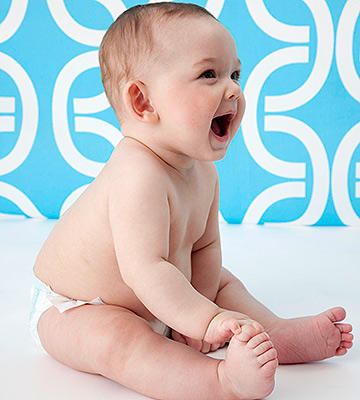
Eighth Month
- Baby uses a variety of lower extremity postures when sitting.
- Baby leans symmetrical trunk over flexed leg to reach for toys and to transition to quadruped.
- Baby practices trunk rotation in sitting. Mobility is at the hip joint.
- Baby reaches in a variety of directions with a variety of reaching patterns.
- Baby uses a radial-digital grasp, opposing the thumb and fingertips.
- Baby manipulates, transfers, and releases toys at will.
- Baby grasps two objects simultaneously and bangs them together in midline.
- Baby moves from sitting to all fours.
- Baby crawls on hands and knees.
- Baby carries small toys in the hand when crawling.
- Once baby lifts body, baby maintains weight on arms while adjusting the legs under the pelvis.
- Baby climbs up on furniture, stairs and people.
- Baby abducts the legs and uses a wide base of support to stabilize the posture.
- Baby cruises around furniture.
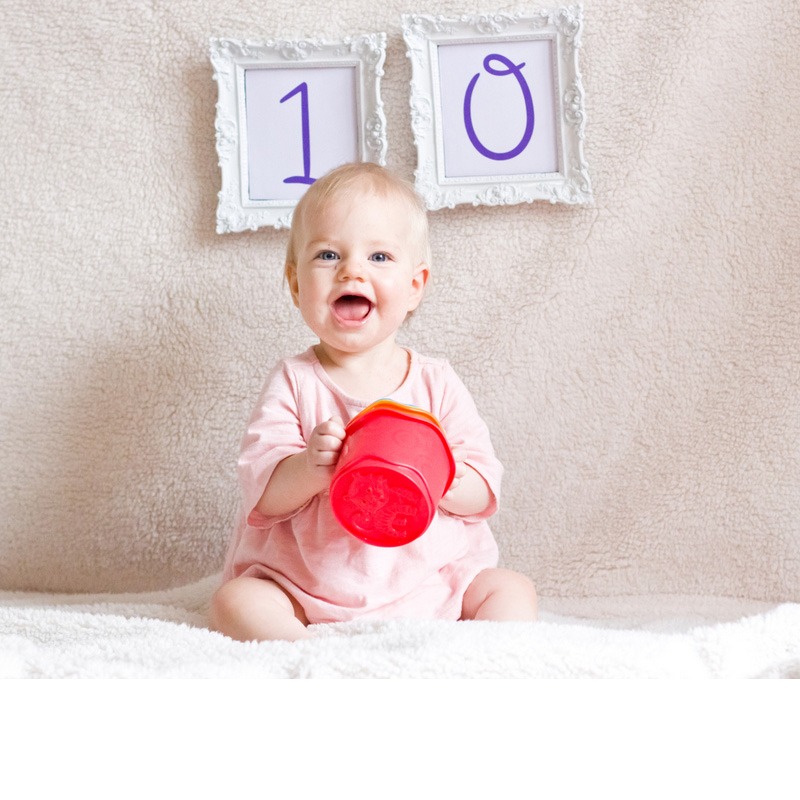
Ninth Month
- Baby is independent and functional in sitting.
- Baby easily transitions in and out of sitting.
- Baby’s trunk control is well developed; therefore, baby uses a variety of shoulder and forearm movements for reaching and moving Baby uses an inferior pincer grasp, with thumb adduction to the lateral border of the index finger.
- Baby uses crawling as primary means of locomotion to explore and to obtain and transport toys Baby assumes kneeling position with and without use of hands.
- Baby can climb up into a chair but does not know how to turn and sit down.
- Baby can ascend stairs but does not know how to descend Baby lowers self from standing to retrieve toys from the floor.
- Baby abducts face-side leg with hip flexion and knee extension and places foot on the floor.
- Baby walks forward when supported at the hands in standing.
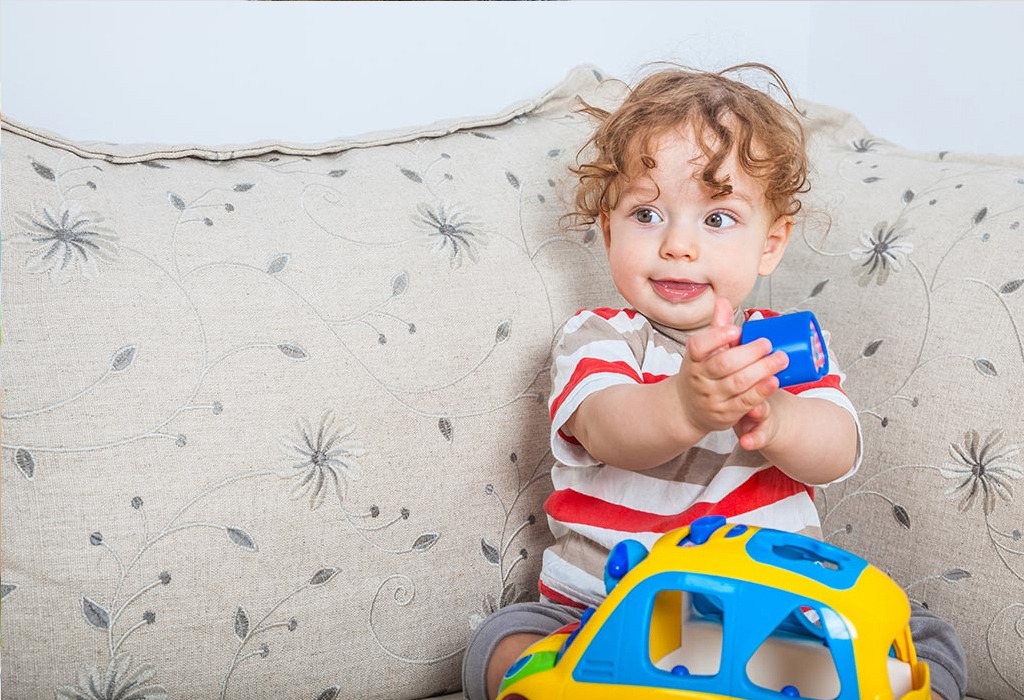
Tenth Month
- Baby can long sit with the legs in line with the body.
- Baby moves arms with control and freedom in all sitting positions.
- Baby isolates index finger to point and poke into little holes.
- Baby crawls or climbs onto or over objets of different heights, widths and stability.
- Baby demonstrates motor planning and problem solving skills by experimenting with and adjusting different motor plans in climbing and crawling.
- Baby rises to stand with minimal upper extremity support. Baby may bear weight on only one hand.
- Once in standing, baby uses leg muscles and minimal assistance of one hand to control the posture.
- Baby makes needed postural adjustments when reaching for objects in different locations.
- Baby uses a variety of cruising patterns.
- Baby begins to reach to furniture of different heights while in cruising.
- Baby begins to stand and walk with one hand held by adult.
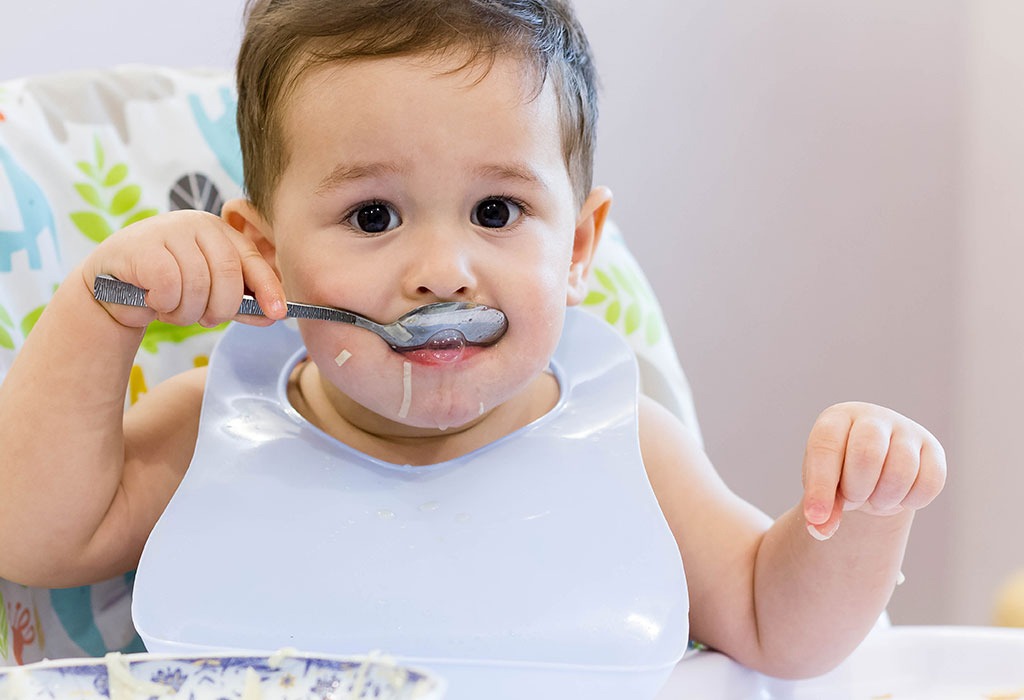
Eleventh Month
- Baby easily moves in and out of all sitting positions.
- Baby uses trunk rotation to reach for objects at the site.
- Baby uses a variety of elbow and forearm movements when the arms are away from the sides.
- Baby manipulates a toy with the hands wile visually inspecting it.
- Baby tries to climb into and out of large containers, such as a box.
- Baby maneuvers the body from the climbing position to sitting, facing the direction of ascent.
- Baby begins to descend from the furniture by moving from quadruped backward off the furniture.
- Baby attempts to rise and stand without support.
- With one hand on furniture, baby can rise to stand through a half-kneeling posture.
- Baby can stand and play at furniture.
- With one hand on the furniture, baby can lower to a squat and rise again without difficulty.
- Baby walks independently with one hand on the furniture.
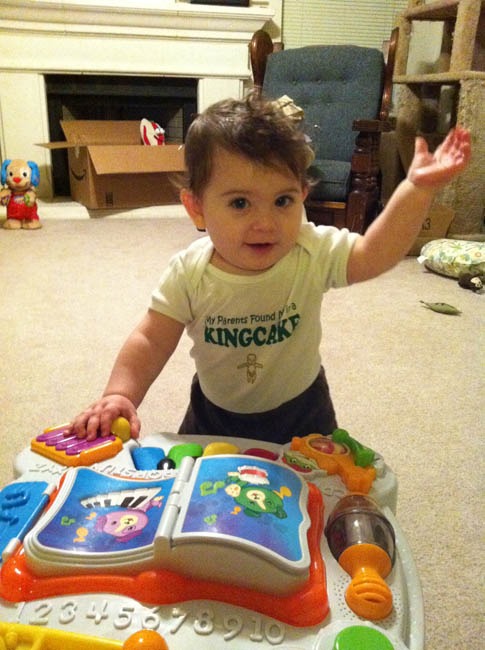
Twelfth Month
- Baby easily moves in and out of sitting to quadruped, kneeling, squatting and standing.
- During reach, baby extends and radially deviates the wrist to position the thumb and index finger for grasp.
- Baby’s release is smooth and graded for large objects but still clumsy for small ones.
- Baby performs bimanual activities as mirror movements.
- Baby begins to use hands in complementary asymmetric roles, such as using one hand to hold a jar while using the other hand to unscrew the lid.
- Baby uses crawling to move quickly Baby may use a squatting position for play.
- Baby climbs onto or into anything perceived as explorable.
- Baby can rise from quadruped to stand without external support.
- From standing, baby can lower the body with or without external support Baby walks independently.
- Baby varies upper extremity patterns according to the goal.
Speech, Language, Oral Motor and Feeding Milestones
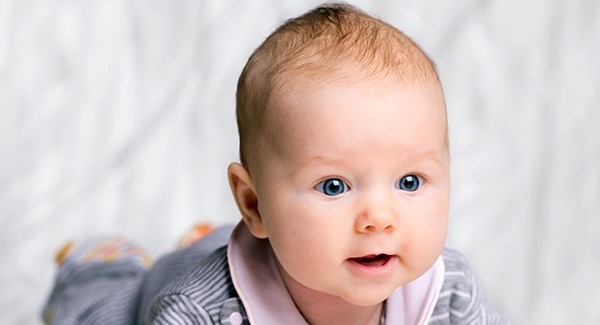
By Three Months
Oral Motor Feeding
- Establishing a feeding routine that is typically stress free and showing adequate weight gain.
Language
- Briefly gazes at people.
- Quiets when picked up.
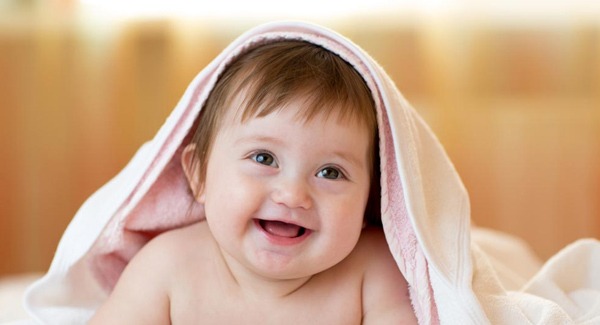
By Six Months
Oral Motor Feeding
- Enjoys mealtime.
- No longer loses liquid during sucking from bottle or breast.
Showing interest in others food.
Language
- Babbles for attention.
- Turns and looks in direction of sound.
- Makes many different sounds.
Showing interest in others food.
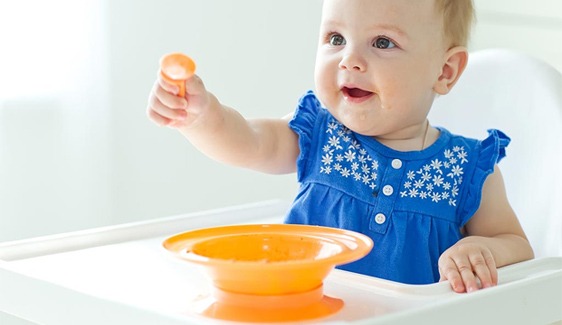
By Eight Months
Oral Motor Feeding
- Has begun taking soft solids from a spoon.
- Is using a primitive chewing pattern with soft foods.
- Can be fed sitting with some support.
Language
- Responds to name.
- Produces 4 or more different sounds.
- Listens to own vocalizations.
- Tries to imitate sounds.
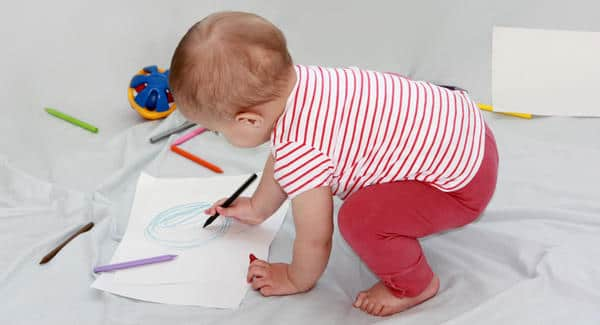
By Twelve Months
Oral Motor Feeding
- Liquids are primarily from a cup even though may still be breast or bottle feeding.
- Eating coarsely chopped table foods, including easily chewed meats.
- Enjoys cookies, crackers and cereals for snacks.
Language
- Using 2-6 words other than Mama and Dada.
- Imitates familiar words.
- Understands simple instructions.
- Recognizes word/object relationship.
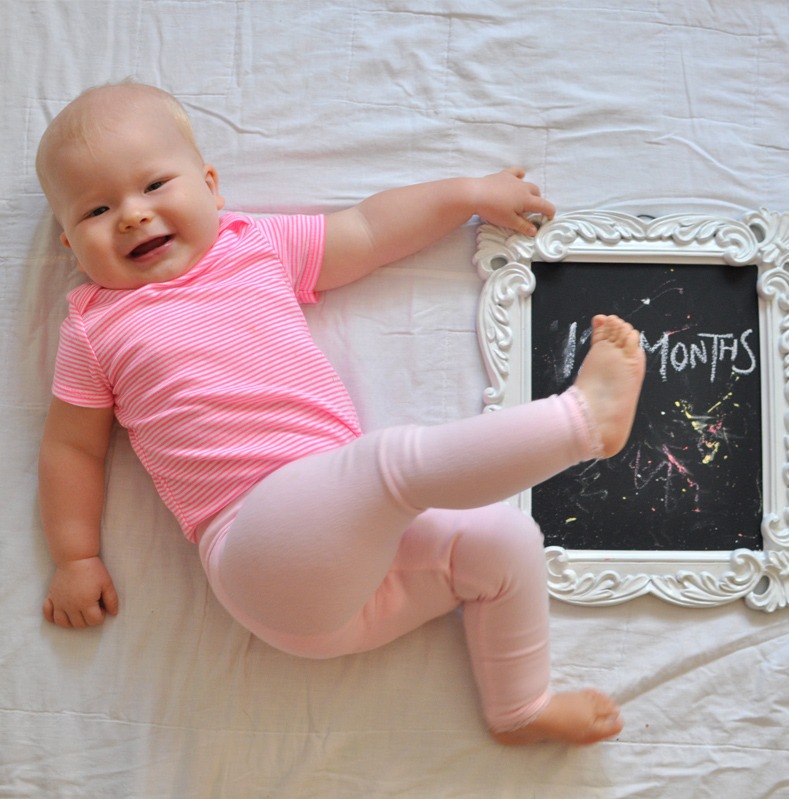
By Fifteen Months
Oral Motor Feeding
- Sitting unsupported for meals.
- Foods now include most meats and many raw vegetables and fruits.
- Drooling is not a problem unless teething.
Language
- Word usage is increasing.
- Asks for “more”.
- Waves bye-bye.
- Begins to point to pictures.
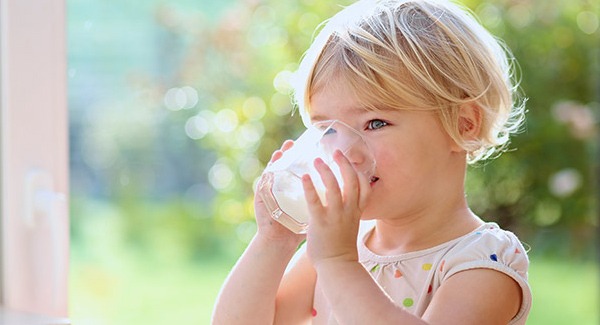
By Eighteen Months
Oral Motor Feeding
- njoys most table foods safely.
- Self feeding with some assistance.
- Drining from an open cup with some assistance with minimal loss of liquid.
Language
- Uses 10-20 words, including names.
- Points to toes, eyes and nose.
- Imitates words and sounds more precisely.
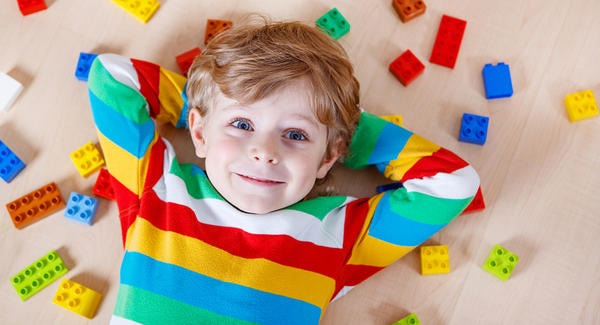
By Two Years
Oral Motor Feeding
- No loss of liquid when drinking and cup is removed.
- Chews and swallows with no food or saliva loss.
- Swallows solid foods, even those with combinations of texture with lips closed.
Language
- Has about a 300-word vocabulary.
- Listens for the meaning of words.
- 2-3 word sentence length.
- Asks “What” and “Where” questions.
- Asks for drink, toilet or food.
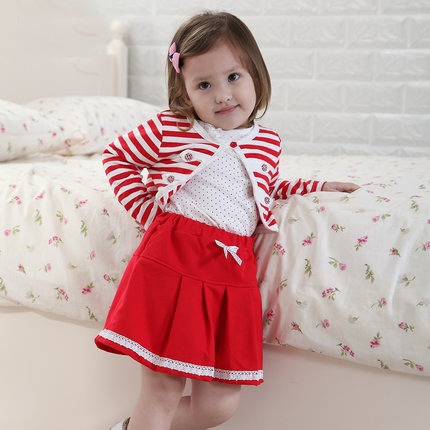
By Two and Half Years
Oral Motor Feeding
- Eats the same foods as the rest of the family.
- Drooling is not present.
Language
- Has a 450 word vocabulary.
- Gives first name.
- Uses past tense.
- Likes to hear the same story repeated.
- Talks to children and adults.
- Can name common pictures and things.
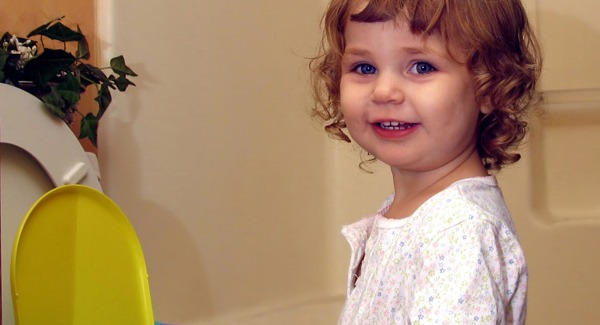
By Three Years
- Has a 1000 word vocabulary.
- Uses 3-4 word sentences.
- Can relay or tell a story or idea.
- Can stay on task for 8-9 minutes.
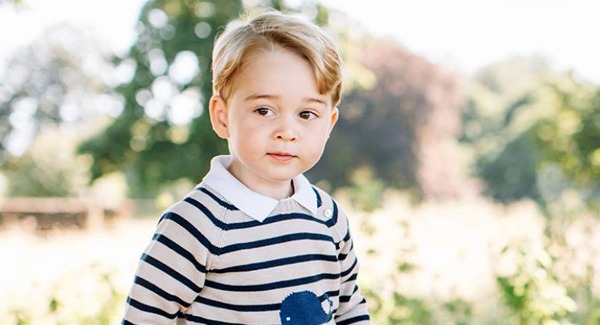
By Four Years
- Uses 4-5 word sentences.
- Asks “who” and “why” questions.
- Identifies some colors and shapes.
- Stays on task for 11-12 minutes.
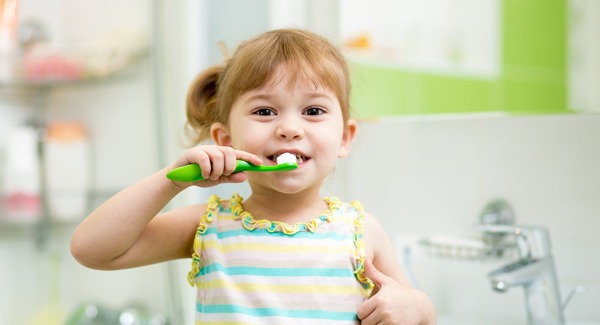
By Five Years
- Uses 5-6 word sentences.
- Knows full name and address.
- Uses all speech sounds correctly.
- Asks questions to get information.
- Uses all types of sentences.
- Understands spatial relationships.
